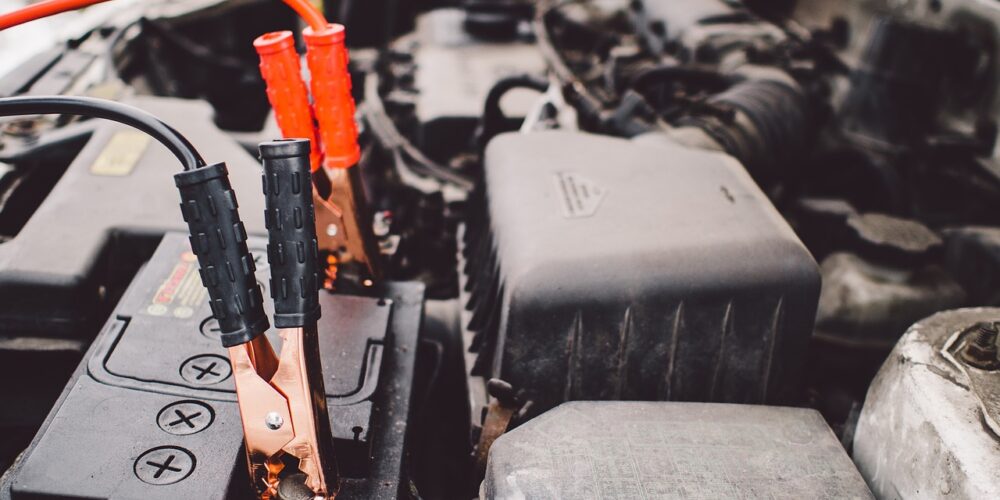Between the UK-wide lockdown, and the harsh winter weather across the UK, your engine needs a bit of TLC to keep itself in top shape. It’s likely that you’ve already heard that you should be starting your car regularly to run the engine, but just how important is this, and should we still be doing it in cold weather? From looking after your car’s battery to understanding what to do if it goes flat, we’ve put together a guide to why you should be running your engine regularly and the best ways to do just that.
Looking After Your Car’s Battery
One of the most convenient things about car batteries is that they are essentially self-charging. The issue, however, is that without regular use of the car, they can quickly go flat. Without enough power from the battery needed to start the engine, you won’t be going anywhere. Older cars or worn out batteries are particularly prone to this, but you should be taking care of the battery regardless.
Thankfully, taking care of the battery is simple – you just need to drive your car. Every time you start up your vehicle and head out for a drive, the battery effectively charges and cares for itself, meaning you don’t have to do anything excessive. If you can’t drive your car for any reason, you could invest in a trickle charger to get a similar effect, but you’ll need to ensure that it is the right one for your car, and that you follow the instructions provided with the charger.
Is Idling Enough?
During lockdown, most of us are only going on short, essential journeys when we need to, so you may be wondering if idling your vehicle is enough to keep the battery charged and ready to go at any given moment. The answer is a widely debated one in the industry for a number of reasons. The first is that while idling will charge the battery a little, some argue that the gain is so minuscule, that in some cases, it can actually do more harm than good.
Idling alone will need to continue for quite some time to see any kind of substantial charge in the battery and that’s providing that nothing else is drawing from the battery in the meantime. This means switching headlights off, unplugging dashcams and other electronic devices, keeping the radio off and more. With all of that switched off, a car’s battery could get back to full charge within about four hours from completely dead while idling, which is detrimental to your fuel consumption! In general, idling works, but you need to dedicate a substantial chunk of time to see any kind of result.
Do I Need To Drive It?
With all of the above in consideration, your best bet is simply to drive your car, keeping to current government restrictions. However, a lot of short trips could have the same effect as idling – you may not gain enough charge to make too much of a difference. It’s advised that you drive at 50mph for 20-30 minutes to really charge the car’s battery and keep it healthy. However, in the current restrictions, this isn’t necessarily easy, particularly for those living in busy 30mph-limited towns.
So, while driving and idling will charge your car’s battery, it may simply be worth disconnecting it entirely if you know you won’t be using it for an extended period of time. A car’s battery can drain within just two weeks of no activity, so it’s important to either disconnect, or ensure that you’re running the engine at least once a week for 15 minutes or more, preferably while driving the vehicle.
What Can I Do If My Battery Is Flat?
The best way to kickstart a battery into working if it seems to be flat is to jump-start it. With good-quality jumper cables and another, fully-charged vehicle, it’s easy to do. Use these steps:
- Connect the red jump lead to the positive terminal of the working batter, and to the positive terminal of the flat battery.
- Connect the black jump lead to the negative terminal on the working battery, and the other end to any earthing point away from the battery or fuel system (e.g. any unpainted metal on the cars chassis)
- Wait a few minutes, then start the working car. Leave it to run for around a minute.
- Start your car and leave both cars to idle for approximately 10 minutes for optimal charge.
- Turn both vehicles off, and disconnect the cables.
Try and start your car on its own – if the battery simply ran down, there should be no problem starting up your car. It’s advised to go for a 15-20 minute drive to fully top up the battery. If the car still doesn’t start, or you don’t have access to another vehicle to jumpstart, call a trusted technician at Service4Service for help.
Our trained technicians provide full engine repairs and diagnostics and only use the most advanced engine parts to ensure that our customers’ vehicles remain in top condition.

